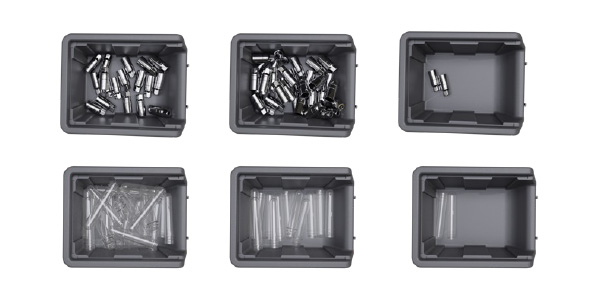4D Vision Technology
4D Vision technology is AI taught to see the world like humans do. With simple 2D cameras, we create 3D understanding that identifies objects and guides robots with speed, precision and reliability.

4D Vision technology is AI taught to see the world like humans do. With simple 2D cameras, we create 3D understanding that identifies objects and guides robots with speed, precision and reliability.
4D Vision is the underlying technology of Apera AI's Vue robotic vision software. We have a world-class team of applied scientists and engineers who are engaged in machine learning, artificial intelligence and deep learning research.
4D Vision is human-like sight for manufacturing. The general rule is if a human can see and determine an object's positioning in comparison to the environment and other objects, so can an Apera vision system.

We start with a CAD model or 3D scan. The part is trained into a digital twin environment using synthetic data. When the training reaches a point of very high reliability—99.99%—a complete vision program is provided to our customer. It is loaded on their computer running Vue software and operation of the robot can begin after a short 15-minute calibration process.
The scene is captured by pairs of 2D cameras and combined into a 3D understanding of the capture area. A single computer running Apera Vue can run up to 4 pairs of cameras to cover a large operating area.
Those images are run through our proprietary AI technology. Objects identified as pickable, even with hundreds of possibilities, are prioritized. The "most pickable" part is chosen, and full path planning instructions are provided through the robot's controller. Due to the number of simulated cycles run during the AI training process, this process happens very quickly—in as little as 0.3 seconds (3 Hz).

Conventional machine learning algorithms are based on having reference images or a CAD model as the foundation of identifying 3D positioning for objects. But what if this is a completely new part and no photos of it exist? Or the CAD model does not show how the object looks under different lighting or its texture?
In training its neural networks, Apera AI uses synthetic data. This allows us to bypass the need for reference images or relying purely on CAD models. Synthetic data allows us to improve the AI process and introduce variables such as lighting, texture, and labels or markings.

Complete robotic guidance using AI makes manufacturing more reliable and productive.

Forge Lab makes AI training and simulation for vision-guided robotics fast and accessible.